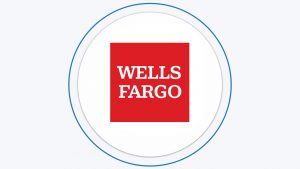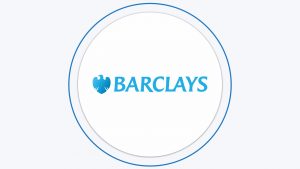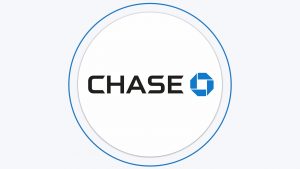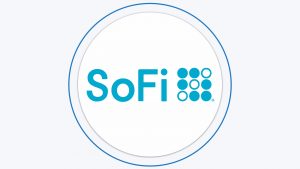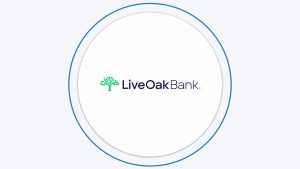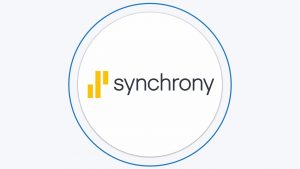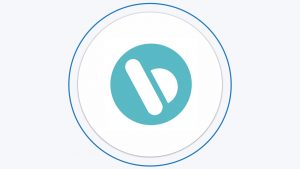Table Of Content
A personal budget provides you with the structure that you need to achieve financial success, but it can often start to feel way too much like work. For those who are always getting to the end of the money they have available before they get to the end of the month … we hear you.
Keeping track of your money is definitely not easy, but it’s something that you can absolutely do if you focus and really put your mind to it. Still, it’s going to take several steps to get you there. If you succeed you’re going to be keeping yourself in the black (at least, that’s how the retail world looks at it when you’re making profits).
You’re also going to have a better understanding of where you’re spending your money. That let’s you see where you can make cuts. Not only that but when you have a budget you can look for ways to increase the money you have coming in. The key is starting with an evaluation of multiple months of habits.
From there, you can make a plan for how to start saving. You can also decide whether it’s saving for something little, or something major. And you can start the math, divide how much you need over what period of time. Whether you go old-school with your pencil and paper, or you decide to get an app, you can start tracking once you know what you’re doing.
The Benefits of Budget Planning?
In this chart using data from Urban Institute, you can see that the age group 43 to 47 carries the highest average credit card debt. This age group has almost double the credit card debt of their under 32 year old counterparts or seniors aged 68+.
Keeping a budget allows you to make a plan for where you’re spending money and where you’re saving money each and every month. It’s definitely not glamorous, and to some, it’s actually downright frightening, but it’s something you can definitely do. It’s also something that’s going to really get your finances in better shape.
While you’ll find a number of benefits if you start a budget, these are the ones we think are the most important:
- Take Control of Your Finances – Having a budget means that you’re going to have control over what you’re spending money on and just how much you spend. That’s going to help you make your money go further and it’s definitely going to help you feel more relaxed as a result.
- Know What You’re Spending – Have you ever looked at how much money you have (or don’t have) at the end of the month and been surprised? You won’t be if you have a budget. That’s because you’ll know exactly how much you spend each day. Your budget shows where that money is actually going so you can better evaluate it.
- Stop Spending When the Money is Gone – With a budget, you have to plan out everything. That means you’re always going to have the money for the things that are necessary. And you’re going to have less ability to be tempted by the things that you don’t actually need. (Since you don’t have the extra money for it).
- Save Easier Than Ever – You’ll be able to see where you could be saving money when it comes to a budget. You know what money you’re spending and you know what expenses you have so you can find some areas that really do allow for cutting back and saving more.
A majority of Americans have a plan to reduce their personal debts within specific timelines, based on a poll conducted by Northwestern Mutual.
How to Make a Monthly Budget?
When it comes to starting a budget the process can be difficult for beginners. If you’ve never had a budget, stick with these tips to get you going.
1. Know What’s Coming In
You have to know your income before you can figure out how much money you have available to spend. So you want to start by looking at your bank statement. If you get a paycheck write down how much you make in pay each month.
If you’re getting child support or alimony or disability or any other type of money on a regular basis right that down to. You want to make sure that your budget reflects only the money that comes into your account. So if you make $20 per hour but you take home $15 it’s only going to help you to account for the $15.
If you get irregular income from your job on a semi-regular basis that should be counted as well. For example, if you know you get a bonus every Christmas or if you get overtime every year at a certain time these are amounts that you can account for as well. You just have to add up the total over the entire year and then divide it over the full 12 months of the year to create your budget.
2. Know Your Monthly Spending
The next step is to identify the money that you’re putting out each and every month. This means the bills that you have to pay. Things like your mortgage, your membership fees for different clubs or organizations, your utilities and your phone bill are going to be regular and easy to account for. Bills like gas for the car or groceries can be a little more difficult but you can average these based on how much you’ve spent over several months.
If you have payments that have to be made irregularly, like paying your car insurance every six months or getting new glasses once a year you can add these up for the entire year and then divide by 12 like you did with the irregular income. This lets you get an average of the monthly amount you spend.
3. Set Your Financial Goals
Having a financial goal is going to give you something that you want to work toward and that’s going to make it easier to stick to your budget.
Now, you need to know what kind of money you’re working with in order to do this, so take the total monthly income that you came up with in step 1 and subtract the total monthly expenses you came up with in step 2. Hopefully, your money is going to come out to a positive number, meaning that you’re making more money than you’re spending. That’s the money you want to use for your savings, for debt payoff and for reaching your goals.
The first step is to think about what you want financially in your life. Are you hoping to be wealthy? Are you looking to get rid of debt? Are you hoping to become successful? Whatever your goals are regarding finances you want to write them out. You want to start by focusing on short-term goals that can be funded through the course of your monthly budget. Things like:
- Paying off debt
- Saving money for college
- Saving money for a down payment
- Setting up an emergency fund
- Saving up for a special purchase
4. Create Your Budget
Some people like to write down all of their expenses with a pen and paper and if that sounds like you then great.
If not, you can use spreadsheets or you can set up apps that will keep track of your money, both going out and coming in. Check out things like Mint, Mvelopes or You Need a Budget to find out how you can track your budget the most effective way for you.
How to Budget Monthly With Biweekly Pay?
The first thing you should do is list all the bills you have. Filling out a monthly budget calendar at the beginning is easier than trying to do a weekly budget. Make sure you have all your monthly spending categories listed and that you have set aside some money for savings.
Record how much you get on your first biweekly paycheck and then keep track of the second biweekly budget. Make sure to divide the biweekly paycheck to get an idea of how much you get paid weekly.
How to Calculate Monthly Grocery Budget?
The easiest way to get an idea of how much you spend a month on food is to keep track of what you spend each time you go to the grocery store. Whether it’s weekly or biweekly, make sure you write down the money you spend each time you buy.
See if there is anything you can cut down. For example, if you find there is wasted food at the end of every month, consider buying less. Vegetables and fruit tend to be cheaper than meat and dairy, so see if you can cut out more expensive items while still eating a balanced and healthy diet.
How to Plan a Family Monthly Budget?
To make a monthly budget, you will need your financial information and the categories you are spending money on each month. Make sure you can divide the categories up according to what each family member will need. Once you have how much you will need to spend each month for every category, think of ways you can reduce spending.
Review the monthly budget once it’s finalized and make sure it’s doable. You should also be tucking away some money every month for savings.
5. Always Be Willing to Change
You’re not going to get it right on the first go-around. That can be hard to hear, but it’s definitely true.
When you start the tracking process you’re going to find areas where you need to make changes. You’ll find areas where you spend more than what you thought you were going to. But that’s okay. You just need to be willing to make changes as you go along.
Now, if you’re having trouble sticking to your current budget you shouldn’t just give up. Evaluate what’s going on. It could be that you need a different method of budgeting than the one you’re trying.
Check out the envelope method, for example. Here you’ll put money into envelopes at the beginning of each month. Each envelope is earmarked for a specific purpose. Once the money in the envelope is gone you don’t spend in that category anymore.
This means that you don’t have the ability to spend more than you have. The envelope money is all there is.
How to Follow a Monthly Budget?
After listing all your bills and the debt you have each month that you need to pay off, see how much money you have left over each month. This money needs to be divided accordingly for food, car repairs, savings, entertainment, etc.
Tracking expenses is the easiest way to follow your budget. Each time you make a purchase, no matter how small, make sure to write it down. This way you will know if you are overspending or have some extra money at the end of the month. Some people find that using a budget app or an excel sheet make it much easier to keep track of the spending.
How to Reduce Your Monthly Budget?
Usually, your bills are non-negotiable unless you consider moving to a cheaper place or renting a room in your house. The areas you can reduce your monthly budget are usually when it comes to entertainment or spending money on clothes and eating out. If you eat at restaurants or get takeout often, you might want to consider getting groceries and cooking at home.
You can also try to cut down on unnecessary driving or try to carpool with friends to see if you can spend less money on gas. If you go out with friends, try to limit it once per week or every other week so you aren’t spending too much money.
Great Plan To Start With – The 50/30/20 Budgeting Rule
For those who are just getting started Elizabeth Warren’s 50/30/20 rule is a good way to go. This is a method that she actually started with her own daughter and it puts your money into three different categories. You have needs, you have wants and debts and you have savings.
The first thing is to take the amount of money that you have coming in every day. That’s the number that we created in step one. Now you have to divide out the money amongst the three different categories.
- 50% For Needs
The first group is going to go for your needs. The amount of money that you bring in gets divided in half and then you put that money toward your mortgage or rent, utilities, health insurance, transportation and anything else that you absolutely have to pay each month.
These are the required things. So any debts and bills get put into this category. Even credit cards, child support and alimony go in this category.
- 30% For Wants
When you want something but you don’t have to have it then it goes in this category. This is for things like that meal out with your friends or that new shirt you really love or tickets to that concert. These are not essential and they can only account for 30% of your budget.
- 20% For Debt/Savings
You want to make sure that you are saving enough that you can actually take care of your future retirement and of course any emergencies that you have. So, take the amount of money that you bring home every month and find out what 20% is (you just multiply by 0.2). That’s the amount that you should make sure you’re saving each and every month. You’ll be able to get a whole lot out of making this decision.
Keep in mind that you need to be bringing in a stable income for this method to work and you could find yourself struggling if you don’t have a regular paycheck. Finding a different method, in that case, might be the best option for you.
Mistakes to Avoid When Planning Your Budget
When you’re starting out your budget these are the things you definitely want to watch for:
- Ignoring Large Expenses – You are going to have big expenses in your life at some point, and you absolutely need to pay attention to them and plan for them. Being able to pay cash is definitely going to be an amazing experience.
- Limiting Yourself too Much – Sure, you want to save money, but you want to make sure that you’re enjoying your life too. If you’re pushing yourself too much or too hard you’re not going to stick to the plan or you will but you’ll be miserable. Neither option is good.
- Not Limiting Yourself Enough – If you’re not paying close enough attention to the numbers that are on your budget you could be spending way too much and that’s not going to help you. In fact, it’s going to give you a negative number on your budget tracker and you’ll find yourself further in debt than before.
- Missing Out on Life – You only get one life and you should be having some fun at least once in a while. Make sure you’re not pushing yourself so hard that you don’t get to do anything fun.
- Ignoring Your Spending – If you’re not tracking the things you’re spending money on you’re not actually going to be able to make any changes in your life. You’re not going to be figuring out where to cut and where to start saving. So, make sure you know what’s going out, where it’s going and what method you’re going to use to keep track of limitations.
- Keeping the Same Budget – You should constantly be evaluating the budget you have to see if it needs to change. You might find that you’re spending more in one area and not as much in another, so it’s a good idea to change the budget to accommodate that. You can also change the budget to account for new expenses.
- Putting It On Paper – No matter what method you like to use to keep track of your budget you should also be committing it to write in some way. This helps to nail down what you’re going to do and how, and it definitely helps hold you accountable.
FAQs
How to adjust monthly budget for a new baby?
Congrats! If you have a monthly budget you follow, you will need to adjust it when you are having a new baby. You will need to estimate the amount you will spend the first year on having a baby. This included medical expenses, diapers, clothes, etc. You will also need to factor in childcare costs if needed.
Then you can divide this number by 12 to see what you need monthly. If it’s your first time having a baby, ask other parents what they spend monthly on a newborn to get an estimate of what money you might need. You might also need to factor in health care costs to add the child to your insurance plan.
How to budget for food monthly?
Budgeting for food can be hard because you might not know exactly what you want to eat every month. It’s easier to make a note of what you normally buy each week at the grocery store if you were going to meal plan for a whole week.
You can then multiply this for 4 weeks to see how much you will spend in a month. Keep in mind you might not have to buy mor expensive items every week. For example, you can buy frozen fish that’s more expensive one week but then you won’t have to buy as much meat the next week.
What should I include in my monthly budget?
The main thing to include in your monthly budget is all your bills. This includes rent, utilities, car payments, and any loans or other debt you pay per month. After that, you need to include how much money you spend on gas and food. Be realistic and see how much you spent the month before to get the best idea.
You should also include a savings portion in your monthly budget. Even if it it’s just a little, you should be putting some money towards savings. You should also include a space for entertainment, clothes, and other miscellaneous items you might need every month.
What is a good monthly budget for a college student?
The exact number is dependent on a number of factors. If you still live at home, you won’t need as much money as if you lived on your own or in a dorm on campus. You need to budget at least $200 monthly for food, gas, and other personal items you might need.
You will need to budget more if you live on your own, have a car payment, or have any debt you need to pay off. Try to spend as little of your student loans as possible.
Sign Up for
Our Newsletter


